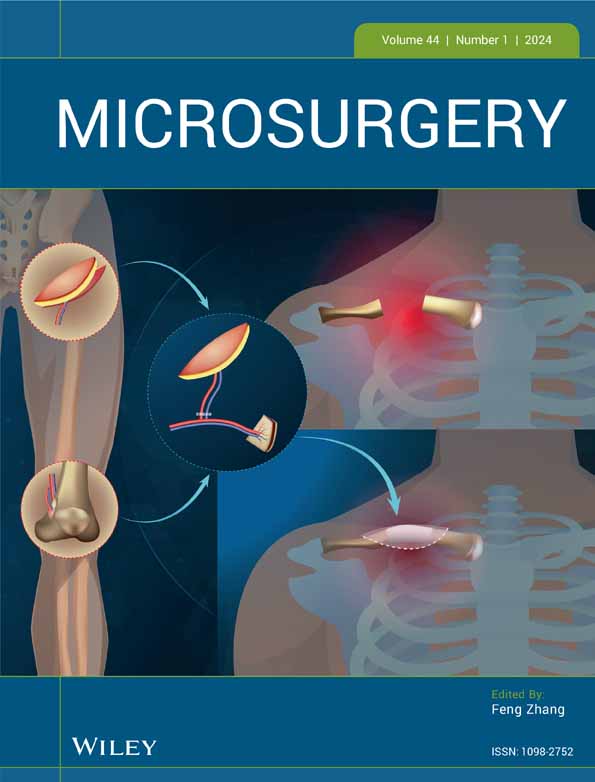Turbocharging as a strategy to boost extended perforator flap vascularity in head and neck reconstruction—A report of two cases
Savitha Ramachandran and Chao-Wei Chang equally contributed and should be considered as co-first authors.
Abstract
Perforator flap has been applied as the most common flap for soft tissue defect reconstruction. Here, we presented two cases using turbocharging procedure of perforator to perforator as a salvage strategy. The first case was a 54-year-old male with recurrent squamous cell carcinoma (SCC) in the left buccal area and mouth floor. A 6 × 22 cm posteromedial thigh (PMT) flap was designed for reconstruction. The two eccentric perforators of the PMT flap could not conjoin together during dissection nearby the main pedicle of profunda femoral artery (PFA) resulting in inadequate perfusion. Side branched stump before clipped the branch of distal perforator was preserved, then the proximal perforator was divided and end-to-end anastomosis of side branch of distal perforator was done successfully. The second case was a 52-year-old male underwent wide composite excision of right tongue SCC. After excision, anterolateral thigh (ALT) flap around 7 × 15 cm was harvested from left thigh and two perforators were included which one tiny perforator supplied by the descending branch (DB) and the other major perforator originated from oblique branch (OB) of lateral circumflex femoral artery (LCFA). However, the OB main perforator injury showed inadequate perfusion of flap. We trimmed the injury zone of OB perforator, and shift to re-anastomosis of OB perforators to side branch of DB of LCFA directly. The flap demonstrated excellent perfusion immediately after the operation, and it exhibited complete survival 2 weeks postoperatively. These results indicated that the turbocharging procedure, from perforator to perforator, could serve as a strategy for salvaging perfusion-compromised flaps, especially in cases of eccentric perforators or perforator injury resulting in inadequate perfusion.
CONFLICT OF INTEREST STATEMENT
Yur-Ren Kuo is an Editorial Board member of Microsurgery and a co-author of this article. To minimize bias, they were excluded from all editorial decision-making related to the acceptance of this article for publication.
Open Research
DATA AVAILABILITY STATEMENT
The data that support the findings of this study are available from the corresponding author upon reasonable request.




